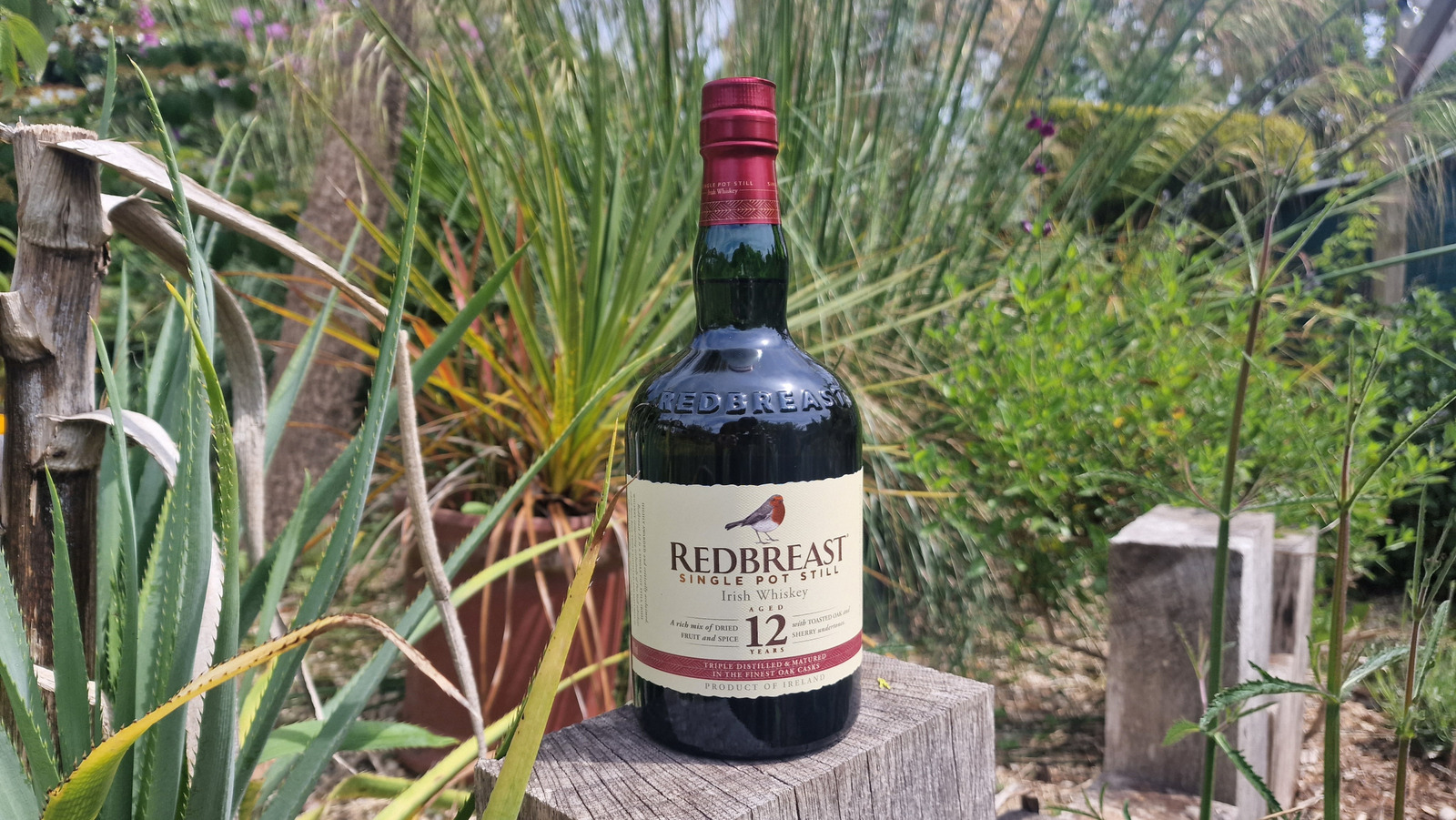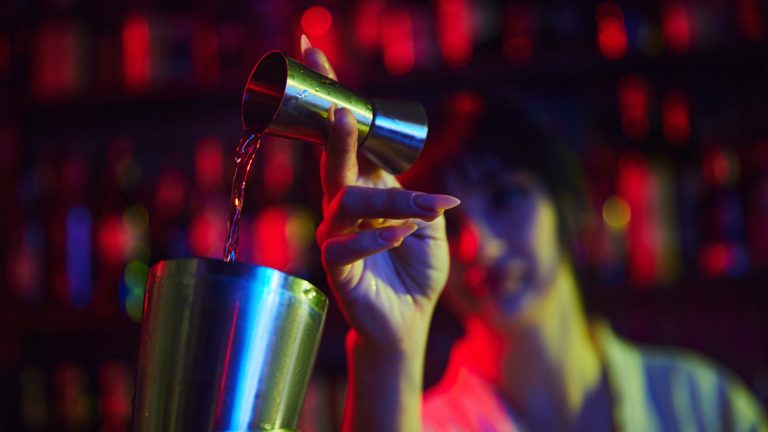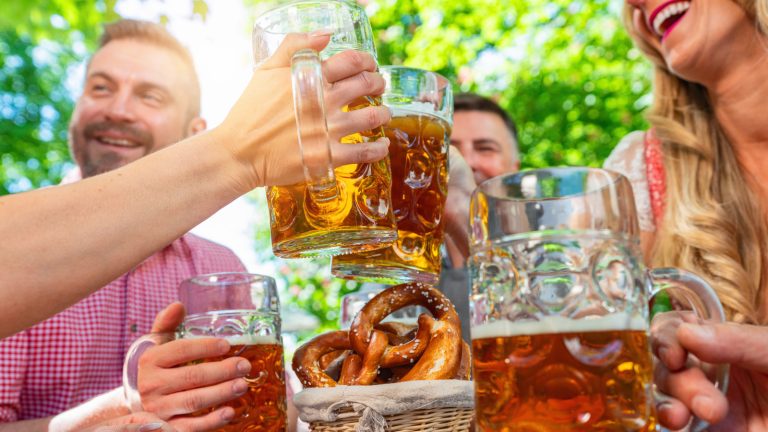While I don’t know how I feel about referring to myself as a connoisseur, a deep love of whiskey and a few decades in the bar industry have made me fairly well-versed in the stuff. Over the years, I’ve sampled more whiskeys than I can count, and I’m pretty excited to be able to shine a light on one of my all-time favorites: Redbreast 12 Year Old.
Redbreast is widely considered one of the best Irish whiskey brands on the market, with no shortage of industry accolades to its name. Its story is intrinsically tied to the growth and development of Irish whiskey, intertwining with the world-famous Jameson family while emerging with a revered reputation of its own.
Despite its lengthy age statement, Redbreast 12 Year Old is actually the youngest of the brand’s age statement expressions, making it a superb option for those yearning to explore what Irish whiskey has to offer. At 40% ABV, Redbreast 12 Year Old remains remarkably accessible, showing confidence in its ability to offer a fulfilling experience without having to chase higher proofs. This particular dram is famed for its creamy, full-bodied character that deftly balances spice with sweetness, often earning comparisons to a rich rye whiskey. Maturation in ex-bourbon casks and sherry rounds out Redbreast 12 with fruit flavors and toasted notes, which contribute to a complex profile many describe as tasting like Christmas cake. Now, let’s take a closer look at what makes Redbreast 12 Year Old so special.
Some recommendations are based on firsthand impressions of promotional materials and products provided by the manufacturer.
History of Redbreast 12 Year Old Irish Whiskey
Redbreast’s story begins with W&A Gilbey, a London-based wine and spirits merchant. Founded in 1857, the company initially specialized in distributing wine from the South African Cape but soon turned its eye to whiskey. By 1875, W&A Gilbey was selling more than twice as much Irish whiskey as it was scotch and, by 1887, it had formed a strong relationship with John Jameson & Son distillers.
Back then, it was common for merchants to purchase pure distillate from whiskey producers, age and bottle it themselves, and then sell it under their own brand name. W&A Gilbey ended up holding hundreds of thousands of gallons of Jameson whiskey, some of which it aged in sherry casks before bottling under the label “Castle Grand Whiskey.” In the early 1900s, W&A Gilbey began offering a premium expression called John Jameson & Son’s Castle “JJ Liqueur” Whiskey 12 Year Old. By 1912 the product had been rebranded “Redbreast,” a choice attributed to Gilbey’s chairman at that time, who was known to be an avid amateur ornithologist. In the 1970s, Redbreast production moved from Dublin’s famous Bow Street Distillery — now a museum — to the Midleton Distillery outside Cork. The brand was eventually sold to Irish Distillers Group, which is now owned by French drinks conglomerate Pernod Ricard. Redbreast’s journey wasn’t all smooth sailing, but we’ll get back to that a bit later.
What does Redbreast 12 Year Old Irish Whiskey taste like?
When you first put your nose to a glass of Redbreast 12 Year Old, you’re immediately presented with a combination of sweet and oaky aromas. There’s rich toffee up front, accompanied by a complex arrangement of dried fruit, stone fruit, and hints of citrus peel. As it opens up with time — and perhaps a splash of water — the nose takes on a delectable peaches-and-cream quality that’s hard to get enough of.
On the palate, the first thing you’ll notice about Redbreast 12 Year Old is the deliciously full-bodied, creamy, somewhat oily texture that’s synonymous with single pot still whiskey. Earlier, I mentioned that Redbreast 12 Year Old is frequently described as having a Christmas cake character, and it’s a description that’s difficult to deny. Warming baking spice notes of cinnamon, nutmeg, and clove intertwine with orange citrus, fragrant vanilla, smooth toffee, and hints of walnut. You’ll also discover the fruity booziness of sherry with buttered toast notes from the extended cask maturation. The 40% ABV strength of Redbreast 12 Year carries the flavors extremely well without ever tasting too hot, making it incredibly approachable for those with less developed whiskey palates.
Redbreast 12 Year ends on a high note. The lengthy finish features pleasantly lingering spices and a balanced malt sweetness that will almost certainly have you reaching back to the bottle for a second pour.
How is Redbreast 12 Year Old Irish Whiskey made?
Like all whiskeys, Redbreast 12 Year Old is made by distilling a fermented mash of malted grains — in this case, barley — before aging in oak barrels. However, that really undersells Redbreast’s process. For starters, Redbreast is made in the single pot still style, a quintessentially Irish distillation method.
Single pot still whiskey is made by a single distillery using a blend of malted and unmalted barley in traditionally copper pot stills. The style emerged in the 1800s as a way for distillers to avoid the taxes placed on malted barley. However, despite starting out as a clever cost-cutting technique, single pot still whiskeys are now arguably the most desirable type of Irish whiskey. This is because the single pot still method produces whiskeys with a uniquely full-bodied, creamy, and spicy grain profile. Redbreast is also distilled three times – something typical of Irish whiskeys — which produces a smooth, refined spirit that retains its robust barley character. As the name implies, Redbreast 12 Year Old is matured for 12 years, but the choice of barrels is highly intentional. The whiskey is aged in a combination of American oak ex-bourbon barrels and Spanish oak Oloroso sherry butts. The former imparts the spirit with notes of honey, vanilla, and toasted oak, while the latter imbues it with rich dried fruit flavors and extra spice.
How to drink Redbreast 12 Year Old Irish Whiskey
With a whiskey as complex as Redbreast 12 Year Old, I highly recommend drinking it neat to fully appreciate its complex flavors and silky mouthfeel. While the spirit is robust, its 40% ABV means it’s easy to enjoy unadulterated. That said, a splash of water will help open the whiskey’s spice notes and reduce the alcohol heat if you find it a little too strong for your tastes.
A single ice cube is also a good way to gently dilute Redbreast 12 Year Old, or you can opt for high-quality chilled whiskey stones if you want to mute the intensity without watering down the whiskey. If you prefer to drink your whiskey with a mixer, you’ll want to avoid anything too heavy that will interfere with Redbreast 12 Year Old’s beautifully nuanced flavors. Soda water or a light, dry ginger ale are good compromises, but you should avoid tainting the whiskey with something like Coke. If you’re looking to employ Redbreast in a cocktail, stick with whiskey-forward concoctions that don’t contain ingredients that will outshine the base spirit. An old fashioned is a solid option, and I recommend using a combination of Peychaud’s and orange bitters to complement Redbreast’s flavor profile. The rye-like character makes it a great contender for a Manhattan or a whiskey sour, and the whiskey also has enough bite to stand its ground in a rich Irish coffee.
Is Redbreast 12 Year Old Irish Whiskey good value?
Although the price of Redbreast 12 Year Old can fluctuate depending on the region, you can typically pick up a bottle for between $55 and $75. While this doesn’t place Redbreast at the top end of the price scale, it’s not what I’d describe as cheap. The real question is whether Redbreast 12 Year Old is worth that price.
There’s no shortage of outstanding whiskeys out there, or even outstanding Irish whiskeys. However, finding one of Redbreast’s caliber below the $75 mark is nothing short of remarkable. Most of the whiskeys I’d consider on par with Redbreast 12 Year Old cost at least twice that amount and are often much younger. If you’re serious about finding out what the world of Irish whiskey has to offer, Redbreast 12 Year Old is a steal. I’d even argue that it can be considered an entry-level Irish whiskey, despite costing a fair bit more than the likes of Jameson. That’s not a criticism of Jameson, by the way — it’s a superb well pour and incredibly versatile — but Jameson doesn’t show off the style’s full potential in the way Redbreast does. Below, I’ll compare Redbreast 12 Year Old with a couple of its closest competitors, so you can see how it differentiates in terms of taste, quality, and price.
Redbreast 12 Year Old vs Green Spot
Another highly regarded Irish whiskey, Green Spot shares more than a few similarities with Redbreast. It emerged in the 1880s as a brand created by a Dublin-based wine merchant who bought and aged distillate from Jameson’s. It’s also a single pot still whiskey produced in the Midleton Distillery by Irish Distillers, the main difference being that Green Spot’s original owner, Mitchell & Son, still owns the brand. Green Spot is similarly matured in ex-bourbon and sherry casks.
The key differences between Redbreast 12 Year Old and Green Spot can likely be attributed to the age of the whiskeys. Green Spot is made with whiskeys aged between 7 and 10 years old, which ultimately results in a lighter profile. Where Redbreast showcases deeper flavors of nut, spice, and sherry, Green Spot leans towards citrus and orchard fruit flavors with more bourbon barrel character. Though the Spot brand does offer more mature expressions with its Yellow and Red Spot whiskeys, they both cost a fair amount more than Redbreast 12 Year Old. Like Redbreast, Green Spot is a superb entry-level Irish whiskey that’s also a little cheaper. Personally, I feel like Green Spot may be more approachable for drinkers who are less familiar with whiskey in general and want to ease into things with an expression that’s easier on the palate. If you’re already someone who loves whiskey and is comfortable with more robust spirits, you can skip straight through to Redbreast.
Redbreast 12 Year Old vs The Irishman 12 Year Old Single Malt
To highlight the impact that single pot still distillation has on Irish whiskey, it’s worth comparing Redbreast 12 Year Old to an Irish whiskey made in a different style. One of the closest whiskeys in terms of price, age, and acclaim is The Irishman 12 Year Old Single Malt. This expression was launched in 2013 and belongs to Walsh Whiskey, a comparatively new company established in 1999 that also produces the beloved Writer’s Tears range.
The Irishman 12 Year Old Single Malt uses 100% malted barley in its mash bill. Originally, the bottlings were made with whiskey distilled by Bushmills — one of the oldest distilleries in the world — but Walsh Whiskey now has a distillery of its own. The first difference you’ll notice between these two expressions is that The Irishman has a cleaner, silkier mouthfeel compared to Redbreast as a result of the distillation process. Flavor-wise, The Irishman is lighter and more elegant, showcasing orchard fruit and floral notes over dried fruits and spice. Some of this can be attributed to the fact that The Irishman is aged solely in ex-bourbon casks, so it lacks the richer sherried qualities of Redbreast. The Irishman is overall a more subtle spirit and shares many similarities with Speyside scotches, so it’s a great option for drinkers who are already familiar with that style of whiskey. For those who want to dive into a bolder, more traditional Irish whiskey, Redbreast is a much better choice.
Redbreast is the master of cask maturation
Every stage of the whiskey-making process is critical if you’re aiming to make a world-class spirit, and it can all fall apart if you don’t get the aging right. Barrel-aging gives whiskey its color, softens harsh-tasting elements, infuses the spirit with additional flavors, and allows time for those flavors to develop. While bourbon must be aged in new oak barrels, other styles of whiskey — like Irish and scotch — aren’t held to such restrictions. This allows for the creative use of pre-filled casks from day one.
I’ve already touched on how Redbreast 12 Year Old makes extremely effective use of previously-used bourbon and sherry casks to enrich its flavors, but that’s just the tip of the iceberg. The Redbreast range features whiskeys that are designed specifically to showcase the tasty potential of cask maturation, each having its own deliciously unique character. Redbreast PX, for example, is re-casked in Pedro Ximénez hogsheads from Southern Spain to give it an even more prominent sweet sherry dimension. The award-winning Redbreast Lustau edition takes things a step further, offering a slightly drier, richer sherry-influenced whiskey. Redbreast Tawny Port Cask Edition caps off Redbreast’s Iberian series with a fruitier, more tannic whiskey. There’s also the wonderfully robust Redbreast Missouri Oak Edition that uses American Oak to coax out even more nut and spice notes, emboldened by a weighty 101 proof strength.
Redbreast was brought back from the brink of extinction
The history of Irish whiskey is a tumultuous one, but that’s not particularly surprising for a spirit that’s been around for close to a thousand years. Despite its current popularity, the Redbreast brand nearly joined the ranks of those whiskeys lost to the annals of time.
The early 20th century was a tough period for Irish whiskey. Factors like the outbreak of World War I, alcohol prohibition in the United States, and the Irish War of Independence against the English had dealt a huge blow to both production and trade. Continued trade wars with Britain and the ongoing Troubles conflict led to an economic downturn that meant whiskey producers were focused more on survival than producing high-end spirits. In the meantime, blended scotch whisky experienced a significant boom, taking full advantage of the hole in the market left by Irish products. As a result, the Redbreast brand became more obscure as sales and distribution plummeted. Gilbey’s eventually stopped production of Redbreast in 1986 and sold the brand to Irish Distillers, a group formed in the 1960s by distillers John Jameson & Son, John Power & Son, and Cork Distilleries Company. Nearly a decade passed before Irish Distillers decided to revive the brand in 1991, focusing on creating a truly premium single pot still expression. In the years since, the Redbreast brand has only gone from strength to strength, expanding its offerings, picking up numerous international spirit awards, and gaining an unbeatable reputation for world-class whiskey.
The Redbreast range is continually expanding
For nearly 14 years, Redbreast 12 Year Old remained the brand’s sole expression. However, in 2005, Redbreast launched a 15-year-old whiskey to commemorate the 50th anniversary of French distributor, La Maison du Whiskey. Non-chill filtered and bottled at a heftier 46% ABV, Redbreast 15 Year Old quickly gained popularity and was named Irish Whiskey of the Year. This was just the beginning.
In 2011, Redbreast released a highly acclaimed cask strength edition of the 12 Year Old, weighing in at a robust 58.6%. This was followed up a few years later by the outstanding Redbreast 21 Year Old, a whiskey that’s since become one of the most awarded whiskeys globally. In subsequent years, Redbreast began releasing some of the special cask editions I mentioned earlier, and in 2020, it launched the ultra-premium 27 Year Old expression. The newest addition to the Redbreast range — Redbreast 18 Year Old — arrived at the tail end of 2024. Perfectly tailored to fit in the gap between the 15 and 21-year-old expressions, this latest release is pretty pricey but a worthwhile investment for anyone wanting to experience a richer version of Redbreast 12 Year Old. One of my favorite things about the Redbreast brand is that the entry-level whiskey is so good while being remarkably affordable, but there’s an opportunity to explore the more premium offerings when you’re ready to spend a bit more.





